Rare Pictures of Hanoi In The Last 100 Years
Over the past 100 years there has been a lot of change for Hanoi, Vietnam, but no one has witnessed that change in the past.
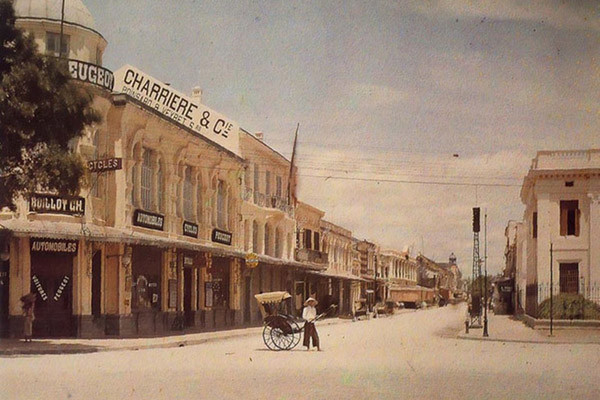
Paul Bert Street (1914/1915), now Trang Tien Street, Hanoi. Paul Bert is a French zoologist, physiologist, and politician. Besides Paul Bert road, his name is also used by the French government in Indochina to name a flower garden in Hanoi, the Paul Bert Flower Garden. This is Ly Thai To flower garden today.

Eue des Ferblamctiers (Hang Thiec street), Hanoi, 1915. Comes from Hang Bo street to Hang Non street, today it is home to manufacturers of iron, zinc, iron and mirrors. . Prior to the French colonial period, it was a place where tin and tin items were made and sold, such as lamps, candles, incense burners, cups, etc.
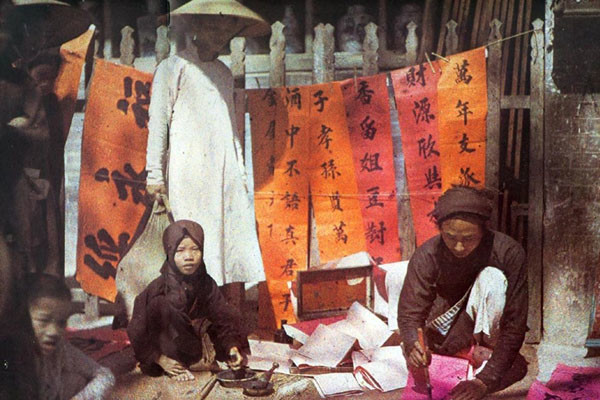
A scholar wrote the parallel sentences for sale. Ask for the letter on the Tet holiday is folk tradition from the ancient, then most of Vietnamese people are not literate, so they have the custom of worshiping letter in the house to dream that their children will later learn, prosper. After this, it is simply a customs with the desire to bring good luck, peace for the family.

Hang Gai Street, Mid-Autumn Festival 1915.
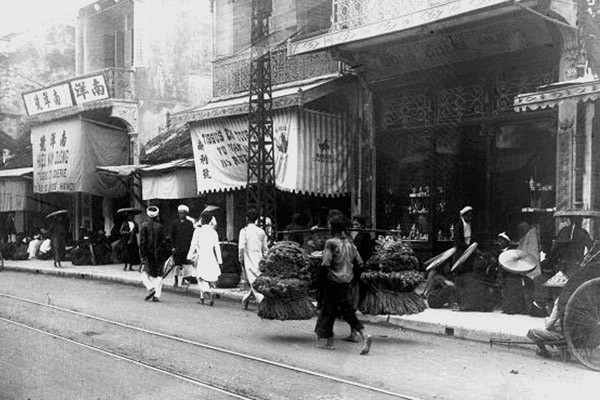
Hang Dao street (Hanoi) in the 1920s. Hang Dao Street is a street in the Old Quarter of Hanoi. The name of the street is derived from the red dyed cloth sold in the old town. Currently, Hang Dao is a one-way street for transportation and is still considered a major shopping area.
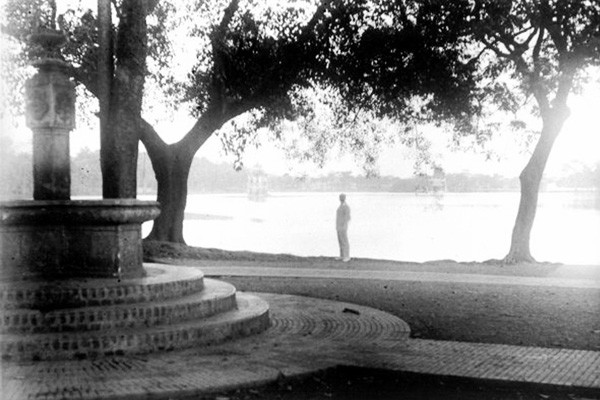
The flower garden next to Hoan Kiem Lake, corner Hang Khay / Dinh Tien Hoang now. The station in the left corner of the photo is no longer exist.
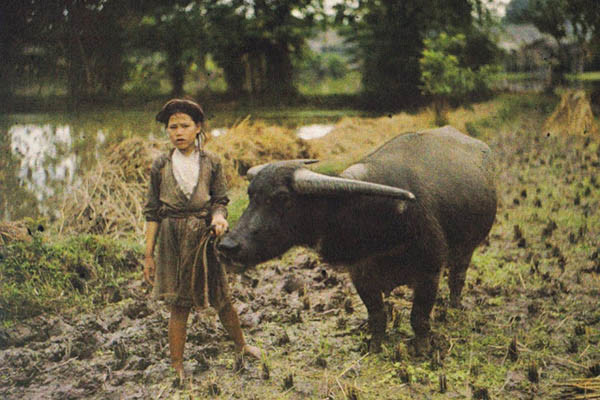
Buffalo girl at suburb of Hanoi in 1915
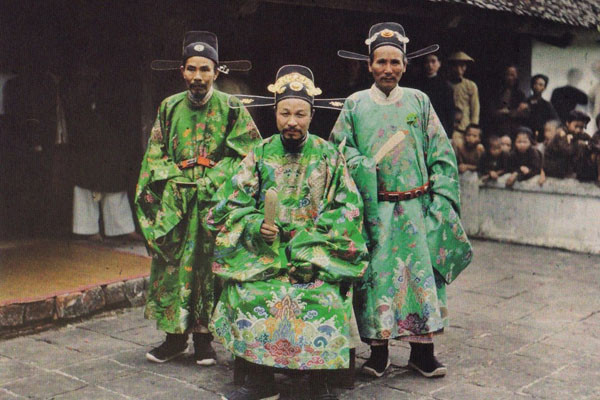
A governor of a province near Hanoi (1915). In the past, this was a Feudalist office given to the governor of the administrative region of many provinces. In Vietnam, from the year of 1831, the king divides Vietnam into 31 provinces, of which 6 are governors of the North: Son Hung Tuyen, Ha Ninh, Ninh Thai, Hai An, Dinh An, Lang Binh.
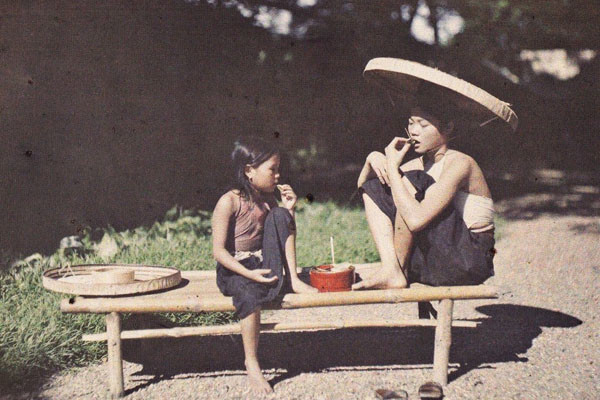
Girl eating betel (1915). For Vietnamese people, betel nut is a sign of style, as well as expressing unique national sentiment. betel nut is also used to commemorate the ancestors, to remember the gratitude of raising the birth of generations ahead. Betel nut close to our grandparents so obviously it also became the image of the culture and people of ancient Vietnam.

Hang Khoai Street. Hang Khoai Street is over three hundred and fifty meters long from the banks of the Red River to Hang Luoc St. The street is named Hang Khoai because next to Dong Xuan Market, daily farmers in the suburbs to gather here to sell agricultural products the most are sweet potatoes, taro, along with rice, maize, beans, cassava.
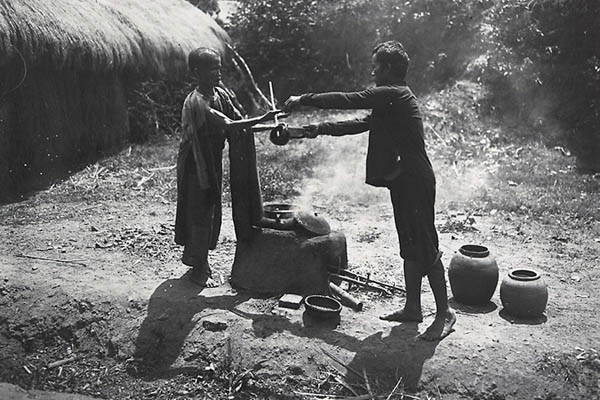
Fresh tea selling
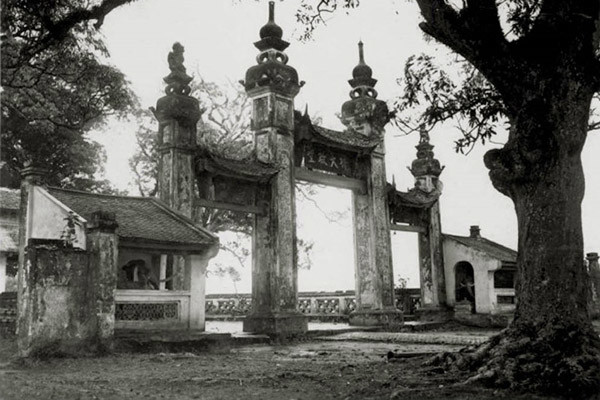
The entrance gate of Lang Pagoda, located at Chua Lang St today. The gate of the three-door is a gateway with three common paths in the pagoda in the traditional Vietnamese architecture.

Temple of Literature, view from Khue Van Cac which today chosen to be the symbol of Hanoi
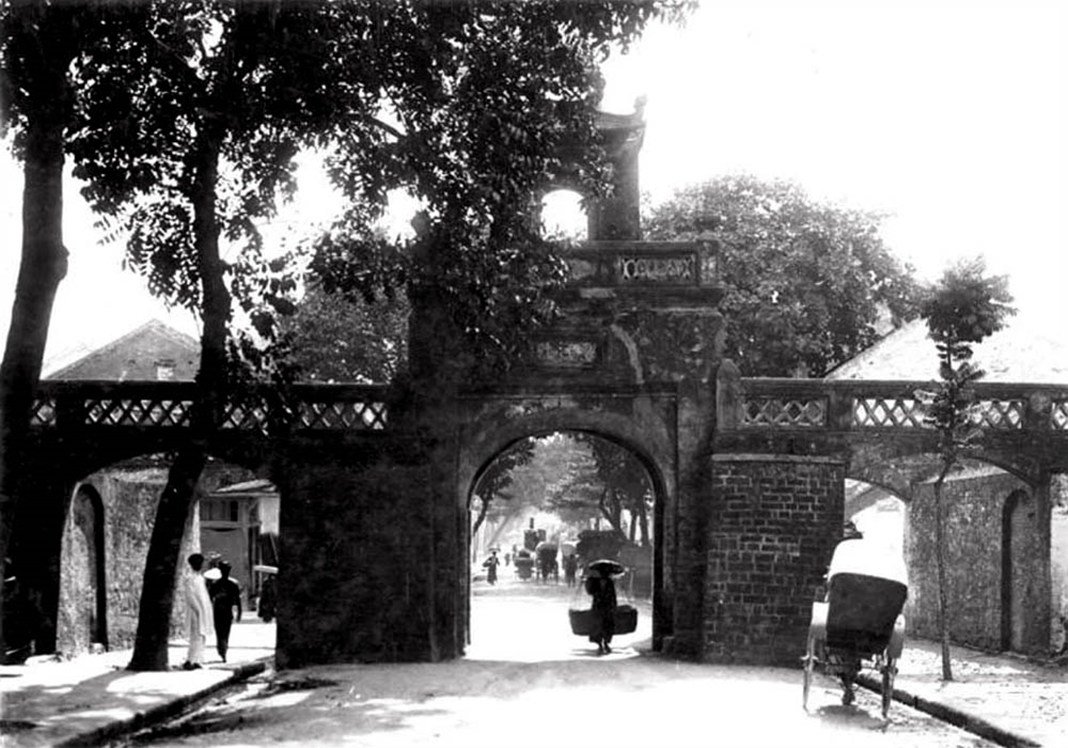
Quan Chuong Gate is a gateway to ancient Hanoi, located on the east side of the Thang Long Citadel, built in 1749, the King Gia Long rebuilt in 1817 and retained style to this day. Today Quan Chuong is located on O Quan Chuong Street, Hang Chieu Street, near Chuong Duong Bridge.
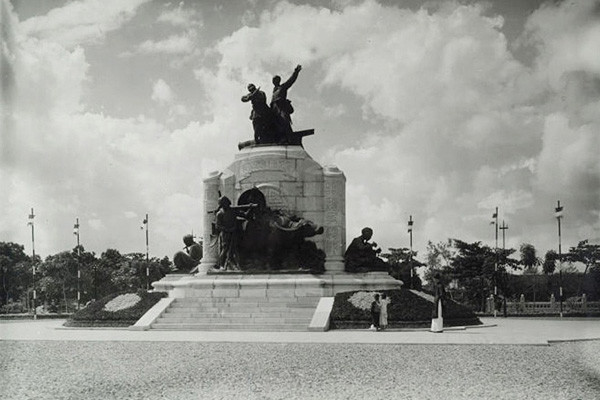
Hanoi 1928, monument commemorating French and Vietnamese soldiers died in World War I. The French colonial period was a period of Vietnamese history, beginning in 1884, ending in 1945. This was the time when Vietnam, together with Laos and Cambodia became a French colony. After successfully invading Indochina, the French divided Vietnam into 3 separate regions: Tonkin, An Nam and Cochinchin; Together with the two protectorates of Ai Lao (Laos) and Cao Mien (Cambodia) became the Federation of Indochina.
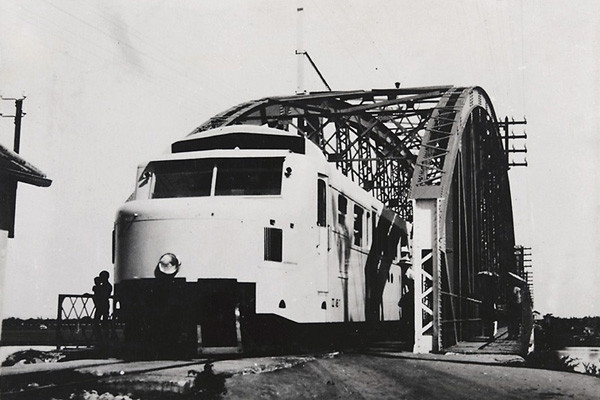
Ha Noi-Hai Phong train is running across Phu Luong bridge, Hai Duong. The 102 km long Ha Noi – Hai Phong railway line was built by France in 1901, aiming to turn this arterial road into a major road for the invasion war in the North Vietnam.
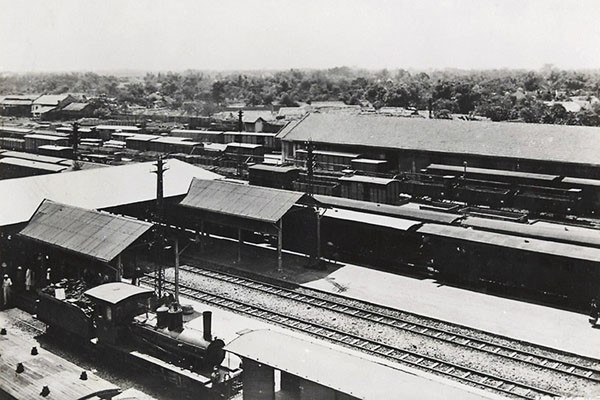
Hanoi Railway Station around 1921 – 1935
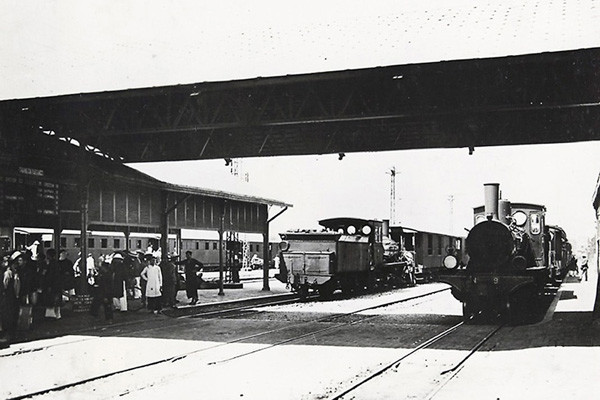
Hanoi Railway Station around 1921 – 1935
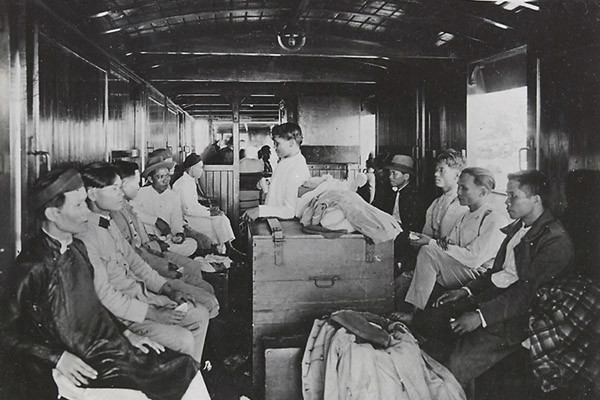
In the fourth class coach, for people with little money, usually carry bulky luggage.
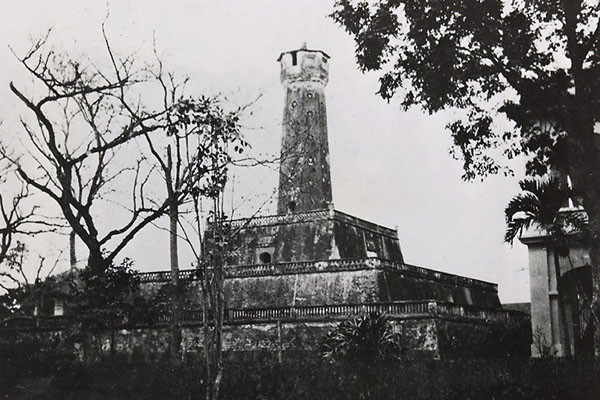
The Hanoi flag tower (1935), built at the same time as Hanoi Citadel under the Nguyen Dynasty (started in 1805, completed in 1812)

Hoa Lo Prison was built in 1896 by France, with the aim of detaining anti-colonialists. This place was one of the largest prisons in Indochina. The major part of the Hoa Lo prison was cleared for Hanoi Tower in 1990s.
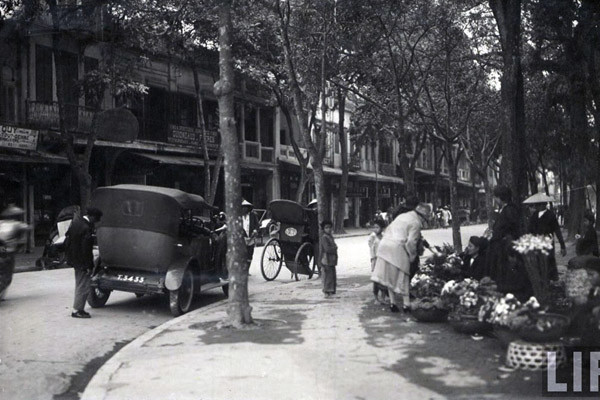
Flower market at corner of Hang Khay Khay St – Dinh Tien Hoang St. During the French colonial period, the side of Hoan Kiem Lake was a flower market for about half a century. In addition, there is a wooden craft, that named the Hang Khay Street – here specializes in making mosaic furniture, including Tray.
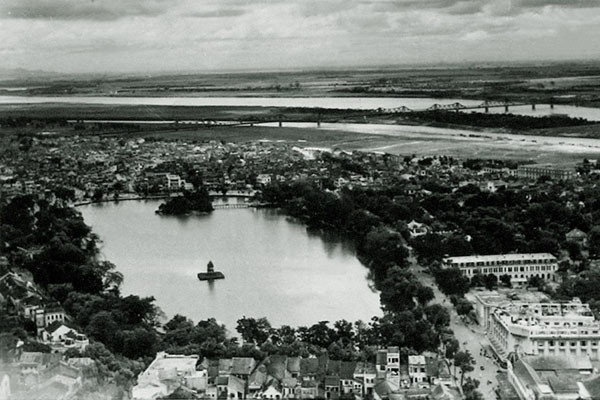
Hoan Kiem Lake from above, with Long Bien bridge at a far
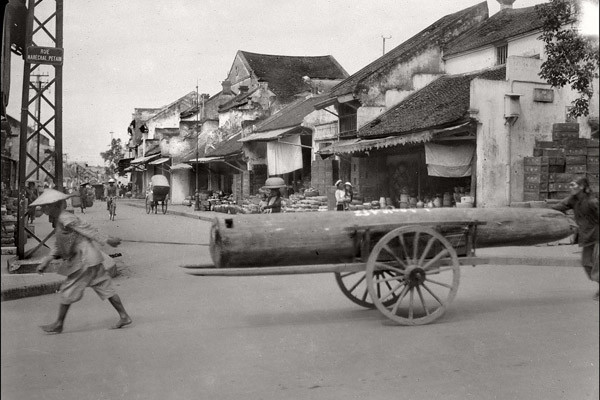
Hanoi in the 1930s. Cross Nguyen Huu Huan Street (Rue Maréchal Pétain) with Hang Mam St (Rue de la Saumure).

Hanoi in the 1930s.
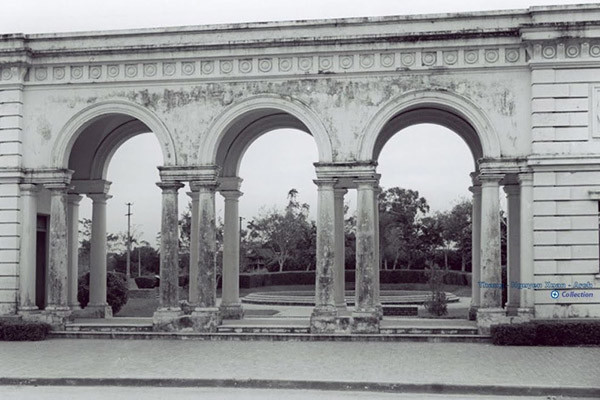
Ba Dinh Square, Hanoi, 1930/40.
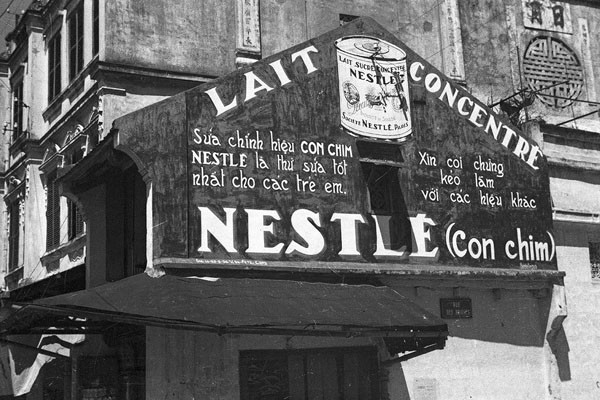
Hanoi 1940. A billboard advertising Nestle condensed milk.
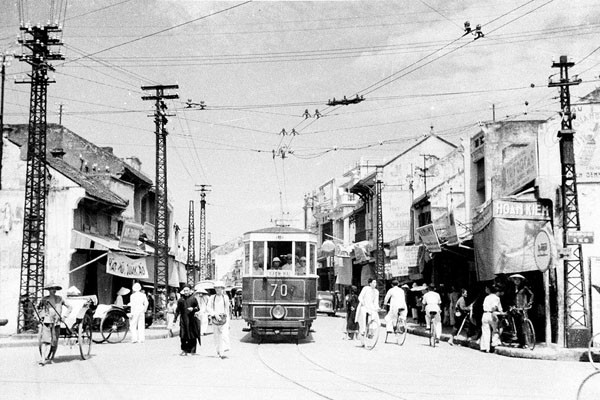
Hanoi 1940. Tram on Hang Dao Street.
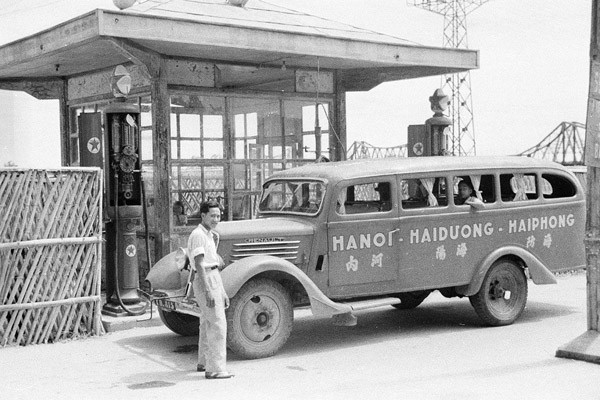
Hanoi 1940. Texaco gas station near Long Bien bridge. At the first time due to Long Bien bridge is narrow not extended the two sides so the passenger cars to the province could not cross the bridge, had to take the ferry across the river. In 1923, the extension of the road on either side of the bridge was completed so the car was not crossing the ferry anymore. Three gas companies, Shell, Socony and Texaco, opened up gas stations, and Texaco won the funding to build a spacious ticket booth. According to the magazine “Nature”, published in French in 1926, published in Hanoi, in 1925, an average of four trucks, 166 cars a day and 79 bus trips across the Long Bien bridge.
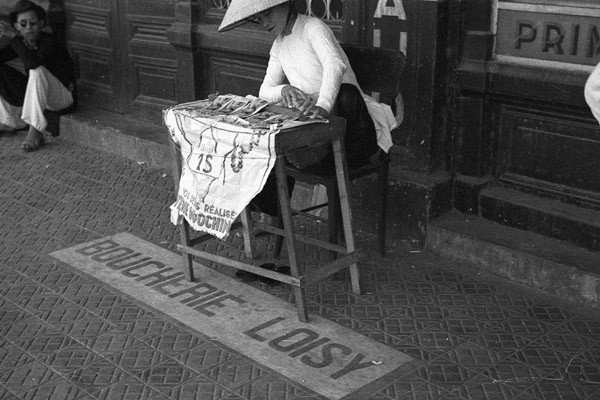
Hanoi 1940. A lottery ticket stall.

Hanoi 1940. Hanoi Opera House was built by the French in 1901 and completed in 1911 in the form of the Opéra Garnier Theater in Paris but smaller stature and the use of materials suitable for climatic conditions in Vietnamese.
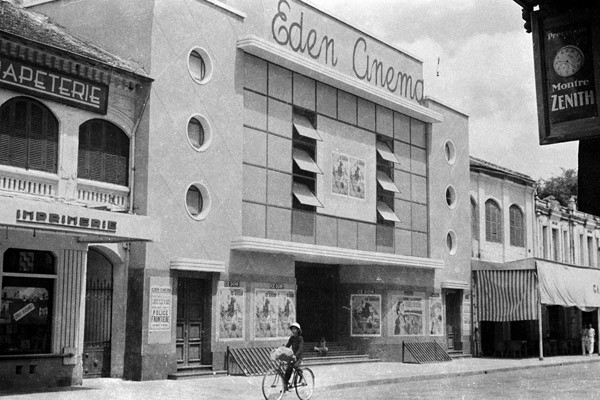
Hanoi 1940. Outside the Eden Cinema. This theater was formerly known as “Cinema Palace”, the most magnificent cinema in Hanoi. It has a beautiful facade like a shell stylized. Later known as Workers Cinema.
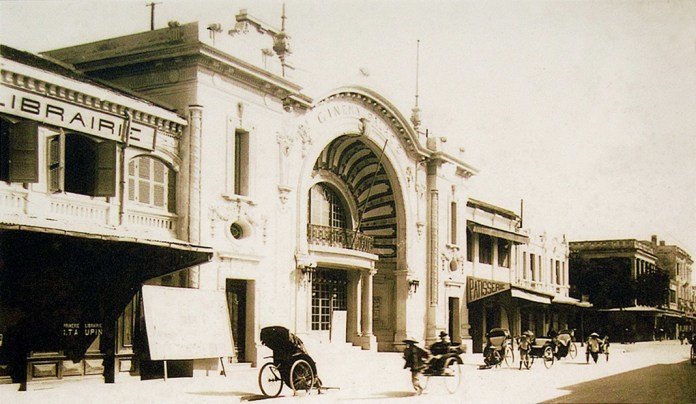
This is the Eden Cinema, before the facade was changed
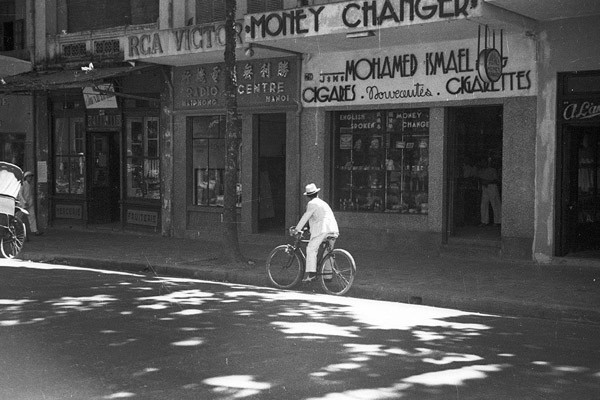
Hanoi in the 1940s
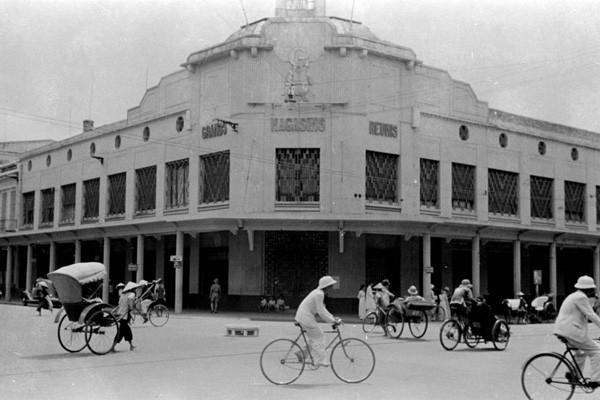
Trang Tien Plaza in 1940s
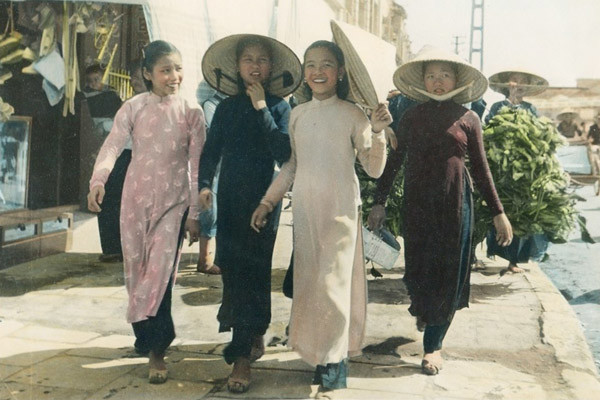
Four young girls in Hanoi, wearing Ao Dai, around 1940.
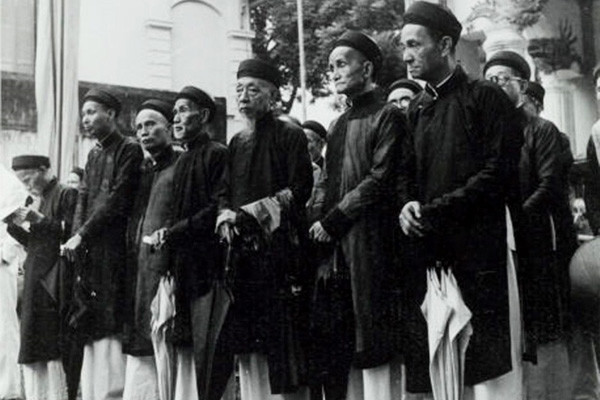
The anniversary of the death of King Le Thai To (Le Loi) at the Le King Temple near Ho Guom (1949).
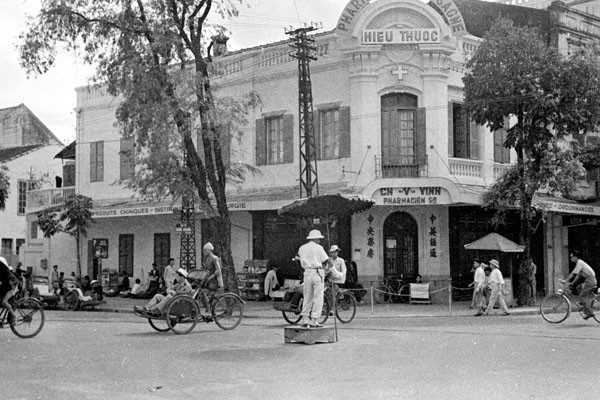
Hanoi 1950. Traffic police at the corner of Dong Khanh – Hang Khay (now Hang Bai – Hang Khay)
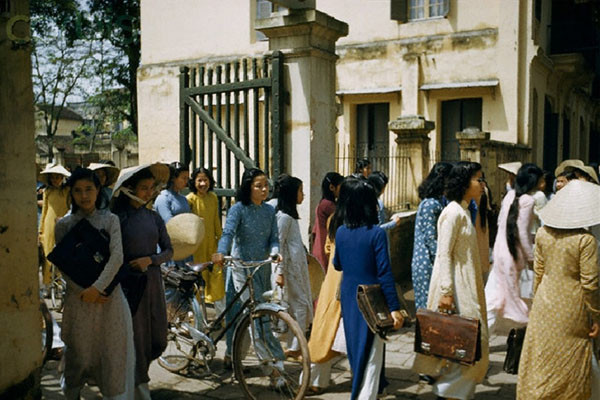
Hanoi students stop school at noon, 1952.
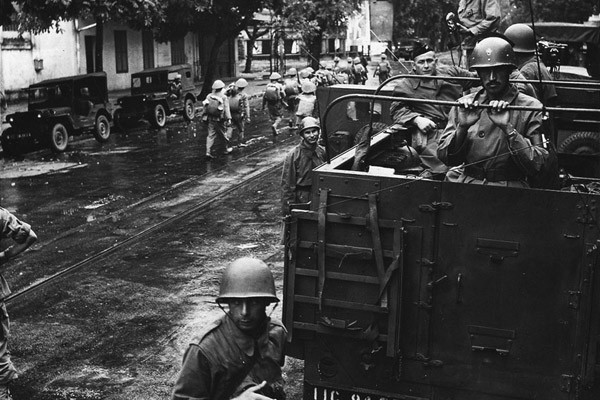
With a defeat at Dien Bien Phu, France was forced to sign the Geneva Accord, and withdrew all troops home. At exactly eight o’clock on October 10, 1954, units of the Vietnamese People’s Army entered from outsides to take over the capital after nine years of occupation.
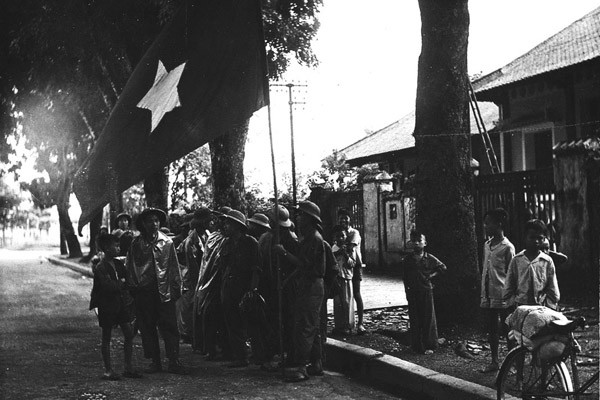
Hanoi 10.10.1954
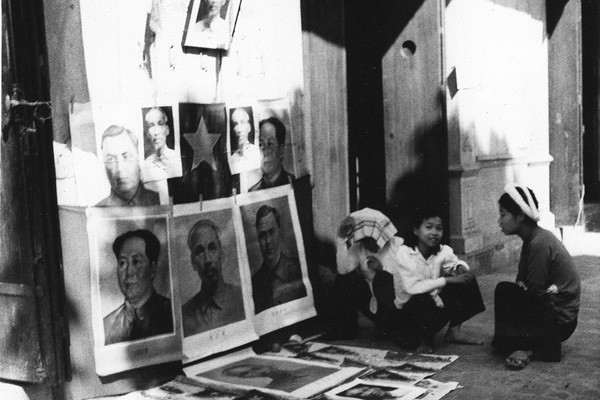
Sold photos of Communist leaders on the streets of Hanoi on October 11, 1954.
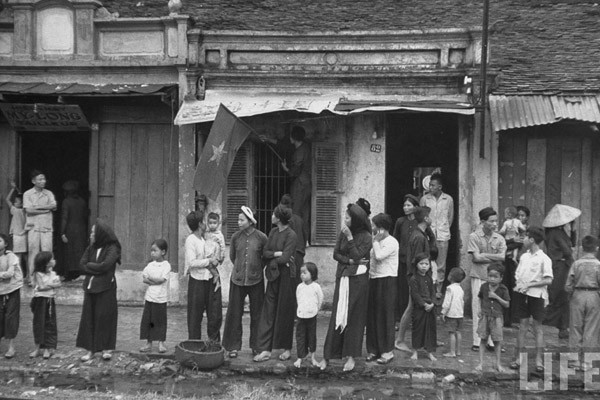
People standing by the road watching the French to withdrawal. Hanoi, 10.10.1954
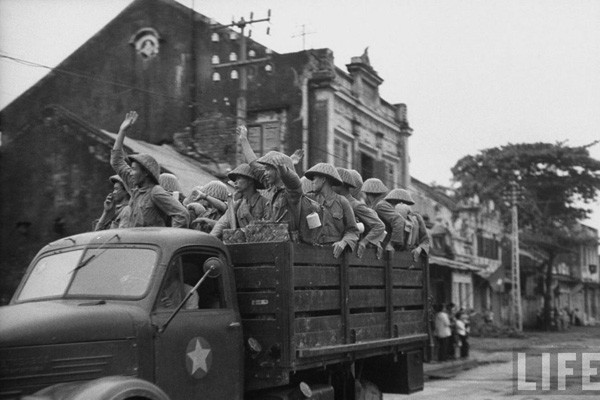
Viet Minh entered Hanoi after the French retreated. Hanoi 10.10.1954
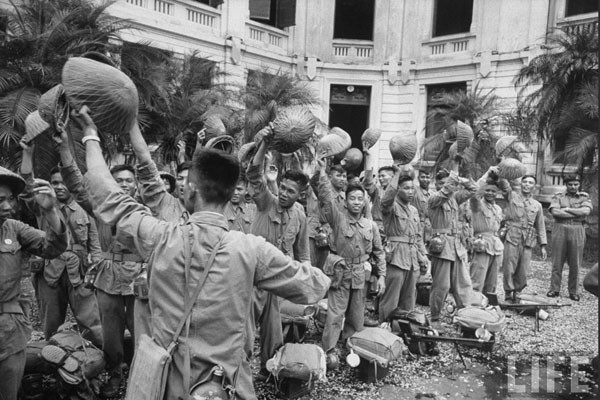
Viet Minh soldiers took over Ton Kin Government’s Palace (Bac Bo Phu)
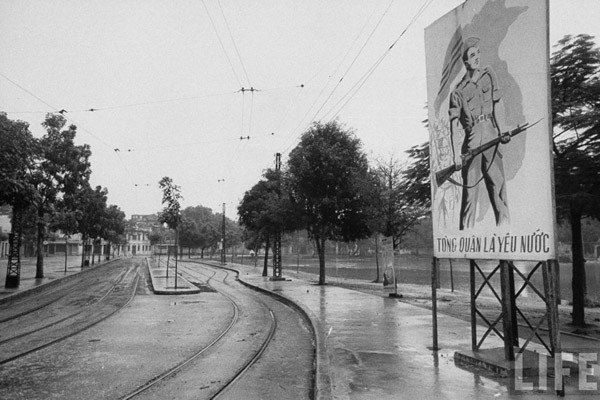
Bo Ho Street Tram Station. Hanoi 1954.
Above is the first part of the Rare Pictures Of Hanoi In The 20th Century with pictures from beginning of the 19th century to end of Indochina war (1954). We will continue to the 2nd part of the Rare Pictures Of Hanoi In The 20th Century with rare pictures of Hanoi in American war and the post war.

